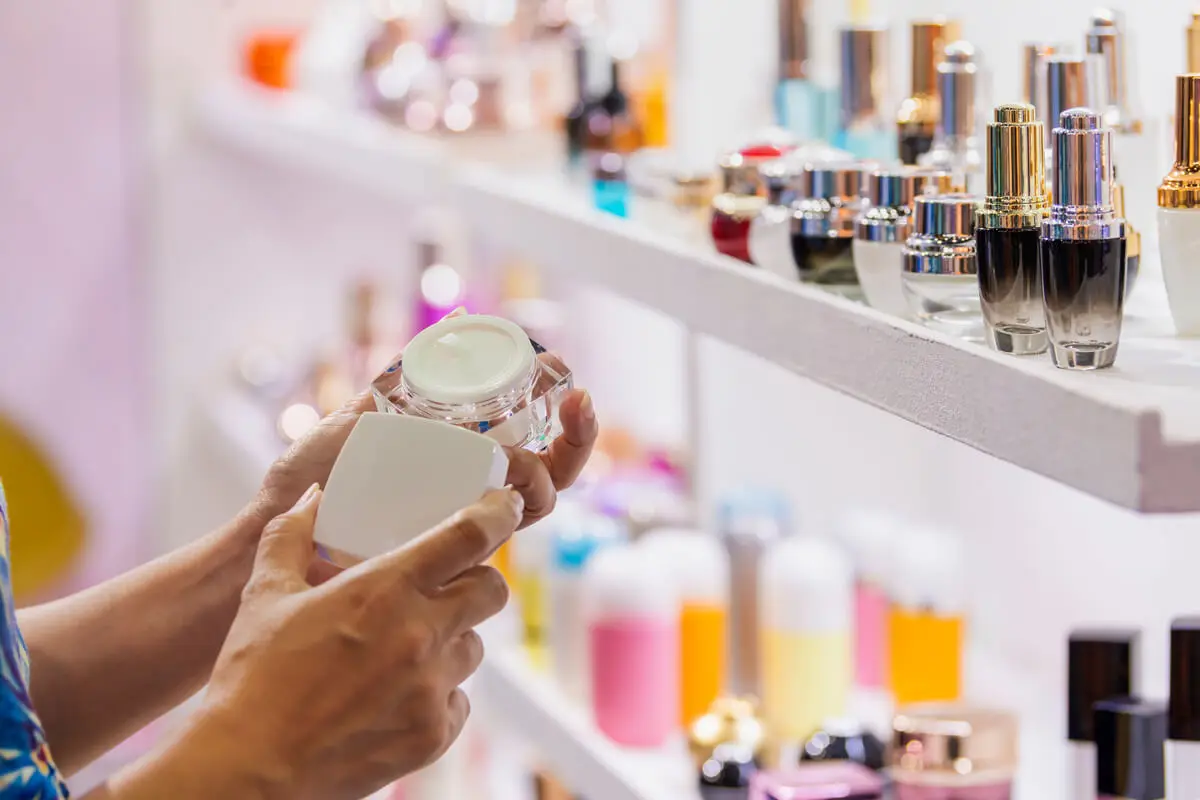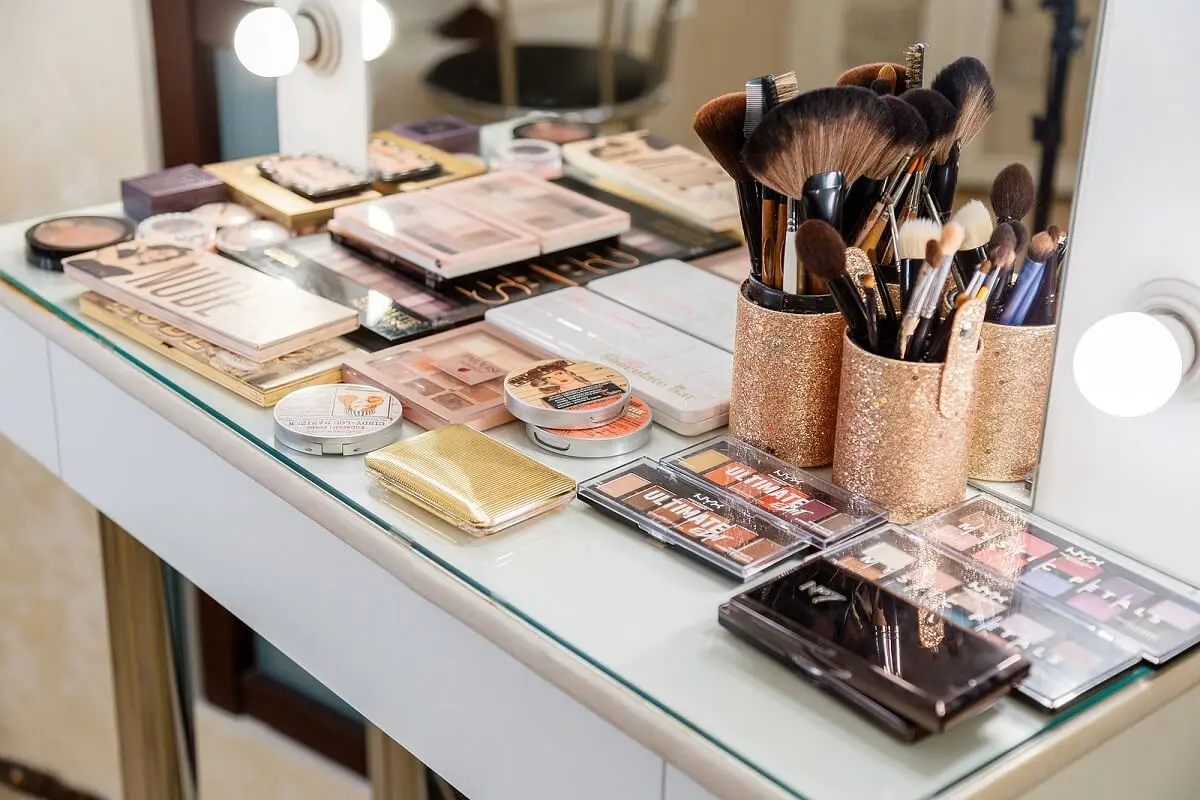What You Should Know About Parabens in Cosmetics


Reviewed and approved by the nurse Leidy Mora Molina
Makeup, hair treatments, creams, lipsticks, sunscreens and virtually all beauty products need preservatives to prevent the growth of microorganisms and extend their shelf life. Because of this, it’s normal to know about the use of parabens in cosmetics.
So, what are parabens? In essence, they’re chemicals that fight yeasts and fungi. Although their purpose is to preserve the shelf life of beauty products, certain foods, and some drugs, the substance could have toxic effects on health.
However, they aren’t contraindicated in all cases. Science and laws approve the use of a few formulas with the ingredient, but only in certain concentrations. So, what do we need to know about these substances?
What are parabens?
Parabens are preservatives that have a bactericidal and fungicidal function. They belong to the para-hydroxybenzoic acid (PHBA) derivatives and, due to their low cost, are widely used in cosmetic composition.
However, their use is controversial. A publication in the magazine Tecno-Logica warns of the importance of monitoring parabens because their high concentrations could accumulate in body tissues and cause skin sequelae.
These substances are rapidly absorbed by the body, metabolized, and excreted in the urine. However, the excretion is partial, as they’re detectable in blood and urine. In addition, it’s suspected that the substance is capable of altering the hormonal balance by activating endocrine disruptors.
The key to preventing damage is to opt for concentrations in permitted ranges.

How to identify parabens in cosmetics
There are organic parabens, i.e., those that metabolize naturally. There are also synthetic parabens or those manufactured with chemicals, composed of propanol, ethane, or methanol.
Identify them on labels with names ending in paraben parabens, for example, butylparaben, propylparaben and methylparaben.
Cosmetics that don’t contain this ingredient usually specify “paraben-free” on the labeling. However, check the labels carefully, as the letters are usually very small or the nomenclature and codes have acronyms that tend to confuse one additive with another.
Discover more here: Seven Toxic Ingredients to Avoid in Cosmetics
Sensitivity to parabens in cosmetics
The Food and Drug Administration (FDA) ranks parabens in second place among the most common ingredients in cosmetics. The same institution has no information that such preservatives in beauty products have effects on human health.
Although they do not inject odors or flavors, nor do they alter the properties of makeup or personal care products, inadequate doses of the ester tend to generate dermatological conditions such as rosacea, dermatitis and allergies.
Consult a doctor if you experience itching, swelling, red bumps, oozing skin, or a rash after applying a cosmetic containing parabens.
As for its link to cancer, an article in the Chemical SafetyFacts.org newsletter states that scientific studies have found no direct link between this substance and the disease.
Read also: The Most Common Makeup Ingredients
Parabens you can use and those to avoid
Apart from the FDA, the European Union’s Scientific Committee on Consumer Safety authorizes parabens, but with certain rules.
Ethylparaben and methylparaben are safe at a maximum concentration of 0.4% per product or 0.8% if it’s a mixture. Alone or in combination, propylparaben and butylparaben are supported in formulations of 0.14 %.
Among the harmful ones are phenylparaben, isopropylparaben, pentylparaben, isobutylparaben, and benzylparaben. Regarding this group, it hasn’t been conclusively demonstrated exactly how harmful they are to health, which is why they’re prohibited.
For children under 3 years of age, it’s always better to use paraben-free personal care products.
How to store cosmetics with parabens
On a daily basis, many people decide to modify their consumption habits to stop using items with this kind of preservatives and try “green cosmetics”.
But if you still have some products with this substance, or you trust more in the effectiveness of the chemical, then take into account the following considerations for storage:
- Store them in a place where light cannot reach them directly.
- Close the containers tightly after applying the contents.
- Aim for a medium temperature, as too high or too low temperatures will alter the stability of the formulas.
- Ask your product supplier if it’s advisable to refrigerate the products. Some people use the refrigerator to keep creams, lotions, and facial tonics.

Products with alternative formulas to parabens
For skin with hypersensitivity, the Spanish Healthy Skin Foundation recommends avoiding contact or exposure to parabens. Check the labeling of the items before buying them and verify that they’re natural cosmetics.
You can also opt for products without preservatives, as they don’t contain water and are becoming increasingly popular. The preservation of this option is through antioxidants that prevent oxidation and prolong their usefulness.
All cited sources were thoroughly reviewed by our team to ensure their quality, reliability, currency, and validity. The bibliography of this article was considered reliable and of academic or scientific accuracy.
- Abellán A. Los disruptores endocrinos: ¿qué son y cómo nos afectan? Instituto de Salud Global Barcelona. España; 2020. https://www.isglobal.org/healthisglobal/-/custom-blog-portlet/los-disruptores-endocrinos-que-son-y-como-nos-afectan-/6113487/0#:~:text=Los%20disruptores%20endocrinos%20son%20qu%C3%ADmicos,afectar%20negativamente%20a%20nuestra%20salud.
- Batista T, Corrêa T, Da Silva N, Melo L. Análisis de parabenos en productos cosméticos mediante cromatografía en capa fina y valoración potenciométrica. Tecno-Lógica. Vol. 24. Núm. 2. pp.202-207. Brasil; 2020. https://www.mendeley.com/catalogue/575e509c-95c2-3f53-b222-b271a54f9008/?utm_source=desktop&utm_medium=1.19.4&utm_campaign=open_catalog&userDocumentId=%7Bb80e53b7-1e62-433f-b063-9b518f222074%7D
- Conde-Salazar Gómez L. ¿Se deben prohibir los parabenos en cosmética? Academia Española de Dermatología y Venereología. https://aedv.es/wp-content/uploads/2015/04/parabenospolemica.grupogedct.pdf
- Cornejo Arteaga P. Principales aplicaciones de los ésteres. Universidad Autónoma del Estado de Hidalgo. México. https://www.uaeh.edu.mx/scige/boletin/prepa3/n7/m6.html
- Parabenos. Chemical SafetyFacts.org. American Chemistry Council. https://www.chemicalsafetyfacts.org/es/parabenos/
- Parabenos en cosméticos. Food and Drug Administration. Estados Unidos; 2022. https://www.fda.gov/cosmetics/cosmetic-ingredients/parabens-cosmetics
- Parabenos. Fundación Piel Sana. España; 2017. https://fundacionpielsana.es/wikiderma/Parabenos
- Reglamento (UE). N° 358/2014. Diario Oficial de la Unión Europea. https://www.boe.es/doue/2014/107/L00005-00009.pdf
This text is provided for informational purposes only and does not replace consultation with a professional. If in doubt, consult your specialist.








